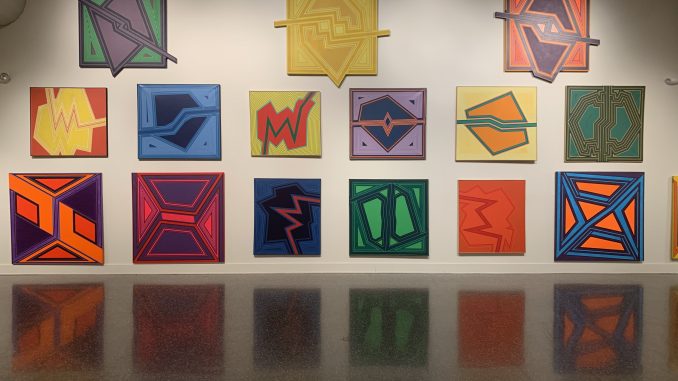
Art is a lot of different things for different people. It can be a career for some, entertainment for others or a saving grace, but never a crutch. Historically, the world has seen a plethora of work by several great artists who had physical disabilities from either injuries or illnesses, ranging from Frida Kahlo, to Henri Matisse, to even Michelangelo, and so on, but their ailments never hindered neither their ability nor their talent. Current exhibitionist of the Dorsky Museum and self-taught painter Leonard Contino is no exception to this.
Contino was born in Brooklyn in 1943 and was always making art: sketching, drawing and painting pinstripes on cars around his neighborhood was his main medium. He was only 19 years old when he suffered from a spinal cord injury in a diving accident, leaving him a quadrapeligic from his shoulders down. Contino was bound to a wheelchair for the rest of his life.
Eventually gaining back some mobility in his arms and hands, it was during his treatment at the Rusk Institute that he met another patient and fellow abstract artist, Mark di Suvero. He would bring Contino canvases, brushes and paint, and talked to him about art. Di Suvero inspired and motivated Contino to create again. Starting to use a brace for his hand, that was exactly what Contino did.
Not only did Contino continue with art, he picked it back up with more ideas than ever. His medium and visions had changed, and only grew to evolve even further. Coming to be known today as a geometric abstract painter, Contino’s work is heavily involved in creating visual dimensions through layering biomorphic shapes, patterned arrays of interlocking squares and rectangles with often atmospheric and juxtaposing hues in the background.
A lot of Contino’s paintings are known to have a glow about them, which is an effect he brings to life on canvas by creating multiple layers of acrylic paint, elevating certain surfaces over others, ultimately letting light shine in various ways by houghtfully placing shapes and dividing his canvases unevenly, Contino played with the focus of his paintings in ways that tricked the eye into thinking facets of the paintings are moving. This in turn is why many of his works are characterized as having illusionistic pictorial planes.
Following his tragic accident in 1962 and being inspired to get back into art, Contino was fully immersed by his passion. He would think of it as a daily practice and paint all day and all night. Once reflecting upon this devotion of his, Contino said art requires one to be “totally dedicated.” It is from this sentiment that the name of his most famous collection was born.
Paintings, however, are not the only pieces in Contino’s collection. He also created collages, reliefs and sculptures. With the support of his friends and fellow artists like di Suvero, James Clark and Frosty Myers, the bulk of Contino’s art was made in a consecutive span of 50 years from around the 1960s to the early 2000s, up until his passing in 2017. “Totally Dedicated” has previously been featured in the Green Gallery, Park Place Gallery, Paula Cooper Gallery and P.S. 1 Contemporary Art Center.

